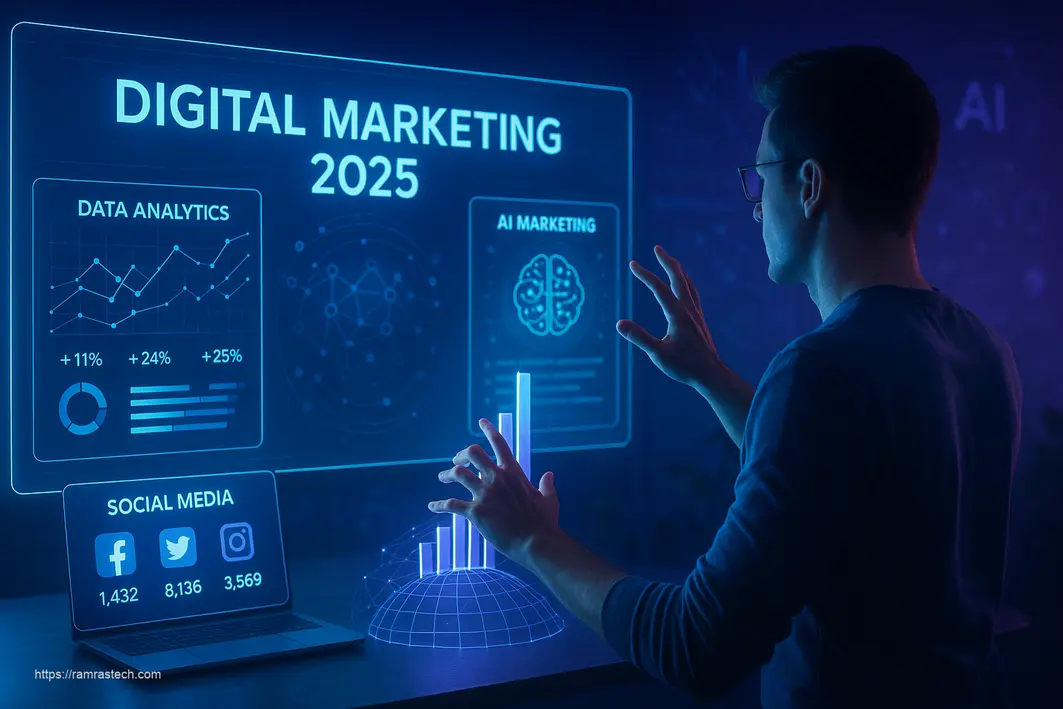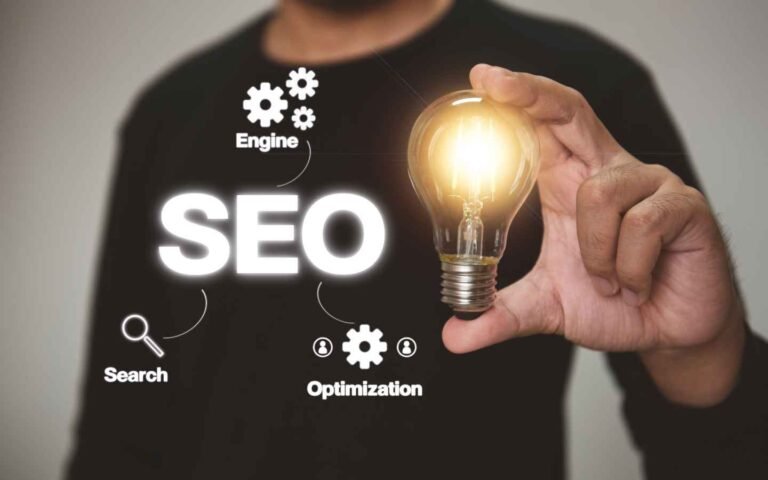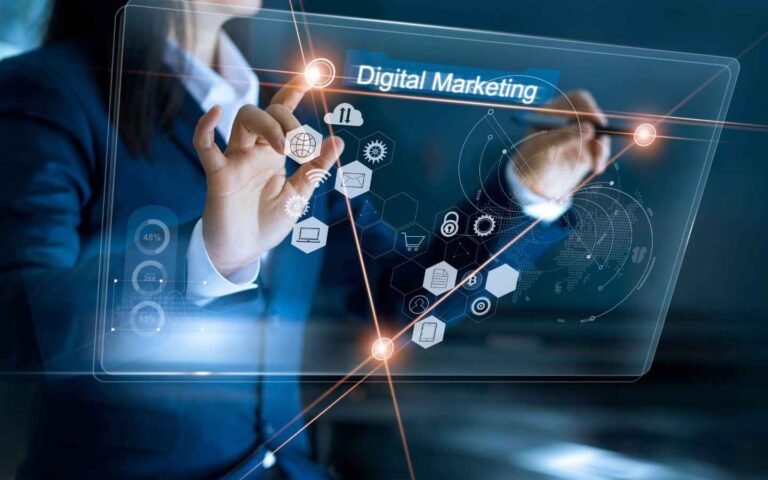Top 6 Digital Marketing Trends You Can’t Ignore in 2025

Staying ahead in the fast-paced world of online marketing isn’t just about keeping up—it’s about anticipating what’s next. As we navigate through 2025, digital marketing trends are evolving at lightning speed, transforming how brands connect with their audiences in ways we couldn’t have imagined just a few years ago.
If you’re feeling overwhelmed by the constant changes or worried about missing opportunities, you’re not alone. I’ve spent countless hours analyzing industry data, speaking with marketing leaders, and testing emerging technologies to bring you this comprehensive guide to the most impactful digital marketing trends that are reshaping our industry right now.
How Artificial Intelligence is Revolutionizing Digital Marketing
Remember when AI was just a buzzword? Those days are long gone. In 2025, artificial intelligence has become the backbone of effective digital marketing strategies, powering an astonishing 70% of strategic marketing decisions across industries.
The AI Marketing Revolution
AI isn’t just changing digital marketing—it’s completely transforming it. From content creation to customer insights, AI tools are helping marketers work smarter, not harder.
“The brands seeing the greatest ROI aren’t just using AI—they’re integrating it into every aspect of their marketing ecosystem,” explains Maria Chen, Chief Digital Officer at TechMarketing Global.
Here’s how AI is reshaping digital marketing in 2025:
-
Predictive Analytics: AI algorithms now accurately forecast consumer behavior and market trends with up to 87% accuracy, allowing brands to anticipate needs before customers even express them.
-
Content Generation: Advanced AI writing tools are creating everything from product descriptions to long-form articles, with 65% of marketing teams now using AI for at least some content creation.
-
Customer Service: AI-powered chatbots now handle 78% of initial customer inquiries, with capabilities so sophisticated that 52% of consumers can’t distinguish them from human agents.
The statistics speak for themselves—AI-driven marketing activities are projected to comprise 75% of all marketing efforts by the end of 2025. This isn’t just a trend; it’s a fundamental shift in how marketing operates.
Real-World AI Applications Transforming Marketing
Let’s look at how leading brands are implementing AI in their marketing efforts:
-
Netflix: Their AI-powered recommendation engine drives 80% of content consumption, saving the company an estimated $1 billion annually by reducing churn.
-
Sephora: Their Virtual Artist AI tool allows customers to “try on” makeup products virtually, increasing conversion rates by 38%.
-
Starbucks: Their predictive ordering system uses AI to anticipate customer orders based on previous purchases, weather, and time of day, increasing average transaction value by 15%.
What’s particularly interesting is how AI has transformed search behavior. Google’s AI features—including AI overviews, video carousels, and image-based search—have fundamentally changed how people find information. In fact, 62% of search queries now include video carousels, and AI search tools have reached over 1 billion users worldwide.
If you’re not leveraging AI in your marketing strategy yet, now is the time to explore essential marketing automation tools that can help you implement AI solutions without breaking the bank.
Hyper-Personalization: The New Marketing Standard
Generic marketing messages are increasingly falling on deaf ears. In 2025, personalization isn’t just nice to have—it’s expected by consumers across all touchpoints.
Why Personalized Marketing Is Critical
The numbers don’t lie: 75% of consumers are more likely to purchase from brands that recognize them by name, recommend products based on past purchases, or acknowledge their purchase history.
Personalization has evolved far beyond just adding a customer’s name to an email. Today’s consumers expect brands to understand their:
- Purchase history and preferences
- Content consumption habits
- Device usage patterns
- Location and time-based context
- Life events and milestones
According to research from Deloitte Digital, companies that excel at personalization generate 40% more revenue from their marketing efforts than average players. That’s a competitive advantage too significant to ignore.
Implementing Data-Driven Personalization
Effective personalization starts with data—lots of it. The most successful brands are using a combination of:
- First-party data from their own digital properties
- Zero-party data voluntarily shared by customers
- Behavioral data capturing real-time interactions
- Contextual data about environmental factors
What’s changed in 2025 is how this data is being applied. Rather than simple segmentation, brands are now creating dynamic customer profiles that evolve in real-time.
“The future of personalization isn’t just knowing your customer—it’s anticipating their needs before they do,” says Raj Patel, Customer Experience Director at Omnichannel Retail Solutions. “The brands that can do this authentically will win the loyalty game.”
Here’s a practical example: Skincare brand Dermalogica recently implemented a personalization engine that analyzes customer data, environmental factors (like local weather and pollution levels), and previous purchase history to recommend personalized skincare routines. The result? A 42% increase in repeat purchases and a 28% boost in average order value.
To enhance your own personalization strategy, consider implementing marketing automation strategies that can help you scale personalized communications across channels.
Video Marketing and Live Streaming: Content That Connects
If a picture is worth a thousand words, then video in 2025 is worth a million. The dominance of video content has reached new heights, with 62% of all search queries now featuring video results.
The Unstoppable Rise of Video
Video consumption has fundamentally changed how people interact with brands online. Consider these facts:
- Over half of all TV viewing is now done via streaming platforms
- Short-form video content (under 60 seconds) drives 2.5x more engagement than text posts
- 78% of consumers watch videos to learn about products before purchasing
- Live video generates 6x more interactions than pre-recorded content
“Video is no longer just one content format among many—it’s becoming the primary way people consume information online,” notes video marketing expert James Wilson. “Brands that aren’t investing in video are increasingly invisible.”
Live Streaming: Building Real-Time Connections
While pre-recorded video continues to be important, live streaming has emerged as a particularly powerful tool for building authentic connections:
- Transparency and Trust: Live streams offer unfiltered, real-time content that builds credibility
- Immediate Engagement: Viewers can interact directly with brands through comments and reactions
- FOMO Factor: The time-limited nature of live content drives immediate participation
- Cost-Effectiveness: Professional live streams can be produced at a fraction of the cost of traditional video production
I recently spoke with Sarah Johnson, Social Media Director at FashionForward, who shared: “When we started doing weekly live shopping events, our engagement rates tripled and conversion rates increased by 67%. There’s something about the authentic, unscripted nature of live video that resonates deeply with our audience.”
Strategic Approaches to Video Marketing
To maximize the impact of your video marketing efforts in 2025, consider these approaches:
-
Diversify Your Video Format Mix: Combine short-form content (for awareness and engagement) with longer, more detailed videos (for education and consideration).
-
Optimize for Mobile Viewing: Vertical videos now outperform horizontal formats on mobile devices by 30-40% in terms of completion rates.
-
Embrace Video SEO: Proper keyword research, closed captions, and structured data markup can dramatically increase your video content’s discoverability.
-
Develop a Live Strategy: Regular live streaming builds community and drives higher engagement than sporadic events.
-
Repurpose Video Content: Extract maximum value by transforming long-form videos into short clips, audio podcasts, blog posts, and social media content.
Need inspiration for your video marketing strategy? Check out our guide on how video marketing has become essential for businesses.
Voice Search Optimization: Speaking Your Customers’ Language
The way people search for information is undergoing a fundamental shift, with voice search becoming increasingly prevalent in our daily lives. Voice-activated searches now account for over 1 billion monthly queries globally—a number that would have seemed impossible just a few years ago.
Why Voice Search Matters Today
Voice search isn’t just a technological novelty; it represents a significant shift in user behavior that marketers need to adapt to:
- 65% of 25-49 year-olds speak to their voice-enabled devices at least once daily
- 55% of households are expected to own a smart speaker by the end of 2025
- Voice searches are typically 3-5 words longer than text searches
- 30% of all searches are performed without a screen (voice-only)
“Voice search is fundamentally changing not just how we search, but also how we think about finding information,” explains SEO specialist David Rodriguez. “The queries are more conversational, more question-based, and more locally-focused than traditional text searches.”
Optimizing Your Digital Presence for Voice
Successfully adapting to voice search requires a strategic approach that goes beyond traditional SEO tactics:
1. Focus on Conversational Keywords
Voice searches typically use natural language patterns. Instead of typing “digital marketing trends 2025,” someone might ask, “What are the biggest digital marketing trends for 2025?”
This means optimizing for question-based queries using words like:
- Who
- What
- Where
- When
- Why
- How
2. Create FAQ Content
Structuring content in a question-and-answer format can dramatically improve your chances of being featured in voice search results. Research shows that voice search results are 40.7% more likely to come from FAQ pages than standard web pages.
3. Prioritize Schema Markup
Implementing structured data helps search engines understand the context of your content. Especially valuable for voice search are:
- FAQPage schema
- LocalBusiness schema
- Organization schema
- Event schema
4. Optimize for Local Searches
Nearly 58% of consumers use voice search to find local business information. Ensure your business listings are complete and accurate across all directories, with special attention to:
- Complete Google Business Profile
- Consistent NAP (Name, Address, Phone) information
- Detailed business descriptions
- Current operating hours
To further enhance your search visibility, explore our comprehensive guide on affordable SEO techniques that can help you optimize for both traditional and voice search.
Sustainability and Ethical Marketing: Values Drive Value
In 2025, consumers aren’t just buying products and services—they’re buying into brand values. Sustainability and ethical practices have moved from nice-to-have features to essential components of successful marketing strategies.
The Business Case for Ethical Marketing
This isn’t just about doing good—it’s about good business. Research consistently shows that ethical practices drive measurable business results:
- 78% of consumers say a company’s environmental practices influence their purchase decisions
- 73% of millennials are willing to pay more for sustainable products
- Brands with strong sustainability reputations outperform competitors by an average of 11% in market valuation
“What we’re seeing is a fundamental shift in how consumers define value,” notes sustainability marketing expert Elena Martinez. “Environmental and social impact is now part of the value equation, especially for younger consumers.”
Building Authentic Sustainability Initiatives
The key word here is authentic. Today’s consumers are highly sophisticated at detecting ‘greenwashing’—superficial sustainability claims without meaningful action behind them.
Successful brands are taking comprehensive approaches to sustainability that include:
-
Supply Chain Transparency: Documenting and sharing the environmental and social impact of how products are sourced, manufactured, and delivered
-
Circular Product Design: Creating products designed for longevity, repairability, and eventual recycling
-
Carbon Footprint Reduction: Implementing and communicating specific goals and achievements in reducing emissions
-
Social Impact Programs: Developing initiatives that address social issues related to the brand’s operations or consumer base
Patagonia remains the gold standard in this area, with its Worn Wear program encouraging customers to repair and recycle clothing rather than replace it. Despite seemingly discouraging consumption, this approach has strengthened customer loyalty and actually increased lifetime customer value by 30%.
Communicating Sustainability Effectively
The most successful ethical marketing strategies follow these principles:
-
Be Specific: Vague claims about being “eco-friendly” don’t resonate. Specific metrics and goals do.
-
Be Transparent: Acknowledge challenges and areas for improvement alongside achievements.
-
Be Consistent: Ensure sustainability messaging aligns across all channels and touchpoints.
-
Be Relevant: Connect sustainability initiatives directly to your core products and customer concerns.
Take inspiration from Unilever’s Sustainable Living brands, which grew 69% faster than the rest of their business and delivered 75% of the company’s overall growth. Their success came from authentic sustainability initiatives directly tied to their product offerings and clearly communicated to consumers.
For more insights on building authentic communication strategies, check out our article on content marketing strategies that boost brand engagement.
Influencer Marketing Evolution: From Promoters to Partners
Influencer marketing has matured significantly in 2025, moving beyond transactional promotions to deeper, more authentic collaborations that deliver measurable business impact.
The Changing Landscape of Influence
The days of simply paying for posts are over. Today’s most effective influencer relationships are characterized by:
- Long-term partnerships rather than one-off promotions
- Genuine product integration into the influencer’s life
- Co-creation of content and even products
- Value alignment between brand and influencer
- Trackable conversion metrics beyond mere engagement
“The most successful brands are treating influencers more like creative partners than advertising channels,” explains Maria Garcia, Influencer Strategy Director at Digital Partnerships Agency. “They’re involving them earlier in the process and giving them more creative freedom, which results in content that resonates more authentically with audiences.”
The Rise of Micro and Nano Influencers
While mega-influencers still have their place, the most interesting developments are happening at smaller scales:
- Micro-influencers (10,000-50,000 followers) generate 60% higher engagement rates than macro-influencers
- Nano-influencers (1,000-10,000 followers) drive 22.2% higher conversion rates than the average influencer campaign
- Niche community leaders often have trust levels that celebrity influencers simply can’t match
Skincare brand Glossier has mastered this approach, building much of its growth through relationships with beauty micro-influencers who create authentic content about their personal experiences with products. The result? A $1.8 billion valuation built largely without traditional advertising.
Best Practices for Influencer Collaboration in 2025
To maximize your influencer marketing efforts this year, consider these strategies:
-
Prioritize Authentic Alignment: Select influencers whose values and aesthetic naturally align with your brand—forced partnerships are immediately obvious to audiences.
-
Focus on Value Exchange: The best partnerships offer value beyond monetary compensation, such as early product access, creative input, or professional development.
-
Set Clear Guidelines, Not Scripts: Provide brand parameters while allowing creative freedom for the influencer to maintain their authentic voice.
-
Measure What Matters: Look beyond likes and comments to track measurable business outcomes like site traffic, lead generation, or direct sales.
-
Build Community Connections: Use influencer relationships to forge deeper connections with specific communities rather than simply reaching broad audiences.
Take inspiration from athletic apparel brand Gymshark, which built a $1.3 billion business primarily through close relationships with fitness influencers. Their approach centered on building a community of athletes who genuinely loved their products, rather than paying for endorsements from the biggest names in sports.
To further enhance your social media strategy beyond influencer marketing, explore our guide on unbeatable social media hacks to boost engagement.
FAQ: Digital Marketing Trends in 2025
What digital marketing skills will be most in demand in 2025?
The most valuable digital marketing skills in 2025 include AI and machine learning literacy, data analytics and interpretation, content creation across multiple formats (especially video), conversational marketing expertise, and customer experience design. Traditional technical skills remain important but must be complemented by strategic thinking and adaptability as technologies continue to evolve rapidly.
How is Apple’s privacy policy affecting digital marketing strategies?
Apple’s privacy changes have fundamentally altered how marketers track and target users, with iOS privacy features limiting access to user data. Successful marketers are adapting by increasing first-party data collection, implementing server-side tracking, focusing on contextual rather than behavioral targeting, and developing more compelling value propositions for data sharing. This shift has accelerated the move toward permission-based marketing models.
How can small businesses compete with large corporations in the digital space?
Small businesses can effectively compete with larger players by leveraging several advantages: greater agility and faster decision-making, authentic community connections, hyper-local targeting, personalized customer experiences, and niche specialization. By focusing on these strengths rather than trying to match big-budget campaigns, smaller companies can carve out profitable market segments even in competitive industries.
What metrics should marketers prioritize in 2025?
While engagement metrics remain important, the most valuable metrics in 2025 focus on business outcomes: customer acquisition cost (CAC), customer lifetime value (CLTV), conversion rates across the buyer journey, return on ad spend (ROAS), and customer retention rates. Marketing leaders are increasingly being evaluated on their contribution to revenue and profitability rather than vanity metrics like impressions or followers.
How are B2B marketing strategies evolving compared to B2C?
The line between B2B and B2C marketing continues to blur, with B2B marketing adopting many consumer-focused approaches while maintaining its unique characteristics. Key B2B trends include the rise of self-service purchasing options for business products, increased focus on individual decision-makers rather than companies, shortened sales cycles through digital channels, and greater emphasis on educational content that builds credibility. The emotional component of B2B decisions is also receiving more recognition in marketing strategies.
Embracing the Future of Digital Marketing
As we’ve explored throughout this article, digital marketing trends in 2025 are creating both exciting opportunities and significant challenges for brands across industries. The six key trends we’ve discussed—AI integration, personalization, video marketing, voice search optimization, sustainability, and influencer partnerships—aren’t isolated developments but interconnected elements of a rapidly evolving marketing landscape.
What’s particularly striking is how these trends reflect a fundamental shift toward more human-centered marketing. Despite the increasing role of technology, successful digital marketing in 2025 is ultimately about creating more authentic, valuable, and meaningful connections with people.
The brands seeing the greatest success aren’t necessarily those with the biggest budgets or the most advanced technology. Rather, they’re the ones that most effectively combine technological capabilities with human insight—understanding not just what their marketing tools can do, but what their customers truly need and value.
As you develop your marketing strategy for the coming year, I encourage you to view these trends not as separate tactical considerations but as different facets of a more holistic approach to connecting with your audience. The most powerful marketing doesn’t just drive transactions—it builds relationships that create sustainable business value.
What digital marketing trends are you most excited about implementing in your business this year? Have you already seen success with any of the approaches we’ve discussed? Share your experiences in the comments below.
For more insights on staying ahead of the curve, check out our comprehensive guide to proven digital marketing strategies to dominate in 2025.






